Win CENS ProFlex DX5 earplugs worth £1,149 – enter here
What makes a cull buck?
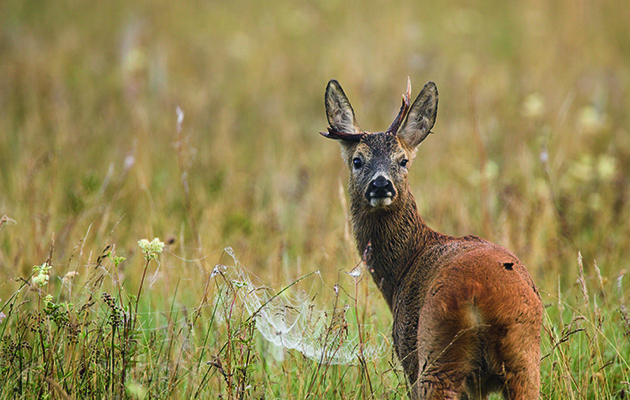
April can be the critical month of the year for deerstalkers and roebucks alike. The start of the new season brings anticipation for what it will hold, confirmation or frustration about decisions made in seasons past, and for many a desire to get off the mark and grass the first buck of the year. In our modern world, the next step is to announce it on Facebook.
The first few days of the season often prove to be the most dangerous for bucks. Stalking effort is high, cover is down, animals are visible and, more often than not, the need to forage for food results in mistakes being made by hungry bucks.
By the time you read this, the critical early days of the month will be behind us, as spring and the season opens out. For many, decisions will have been taken, but for those who have waited what should inform us about the age class and potential of a roebuck?
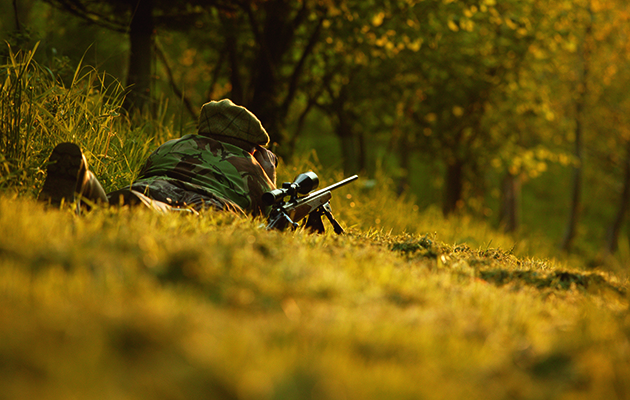
Spring brings the opportunity to observe populations and to see how the deer have fared
Judging animals on the hoof is neither easy nor simple. A snap encounter and reactive decision can lead to regret. While an opportunity passed up may never recur, an opportunity taken is final. After all, we cannot choose to return buck like some stock rainbow trout. For good or bad, that animal is gone. The need to balance the male population in terms of numbers, age structure and condition is critical to good management.
Spring provides an opportunity to observe populations, to take stock of how animals have fared over the lean months, and to get some idea of the structure of the population by age and by quality. If this opportunity is capitalised on, a sustainable harvest of bucks for both management and sport should be achievable.
Indicators of age
By the start of the buck season, it should be possible to make a judgement on the age class of the bucks we stalk. Size and body conformation aside, it is likely that mature animals — those that have reached their fourth year — will be clean or cleaning of velvet. Mature animals tend to shed their velvet first and by the start of the season will often be found to have well-coloured antlers.
Younger animals will either still be in velvet or in tatters with pale, perhaps blood-stained, beams. Most younger bucks will be at a stage where the structure of their growing antlers is defined and the number of points under the velvet should be countable.
Juvenile animals — that is, most yearlings growing their first head — will still be in velvet, and will be at the stage where there is more growth to come or where the structure of the growing head remains indistinct.
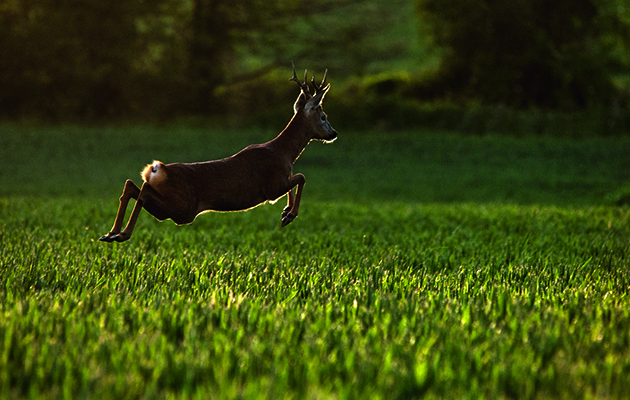
Not all animals will come out of the winter in peak condition
All in the shape of a cull buck
Regardless of gender or species in deer, body conformation gives the best indication of age class and condition. This should be a key factor in deciding whether to cull or to leave. With roe, the shape of the neck, the angle of the head and the frame size give the best guide to the age class. Confirm that the animal fits in with the cull plan, or alternatively with the aims of the stalker. Does the animal appear to be in good order? Does it have any obvious injury or physical problems?
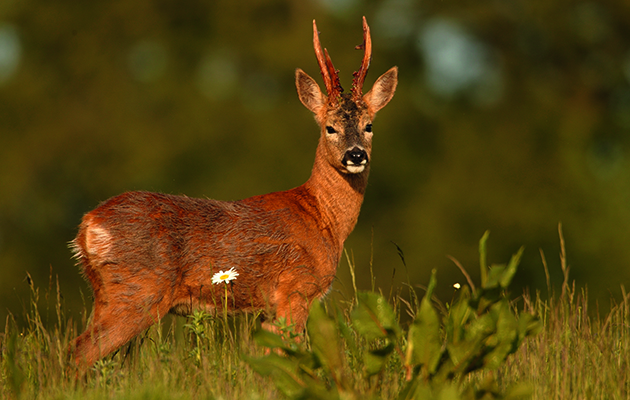
This mature buck has asymmetric tines and would be a good trophy to take
In deciding, it is important to recognise that not all healthy animals will come through the winter in the same condition. While some will have exhausted their body reserves and look poor, others might well emerge in sparkling order. However, the apparently weaker animal might well carry genes that will improve the overall population, while the visibly better specimen might not.
Equally, some animals might carry short-term injuries that, if left, will resolve themselves in due course. Key among these are limping animals. While correct cull decisions are made on the basis that an animal carrying a severe leg injury needs to be dealt with, others find themselves
on the wrong end of a high-velocity round due to a misplaced foot on a sharp stone!
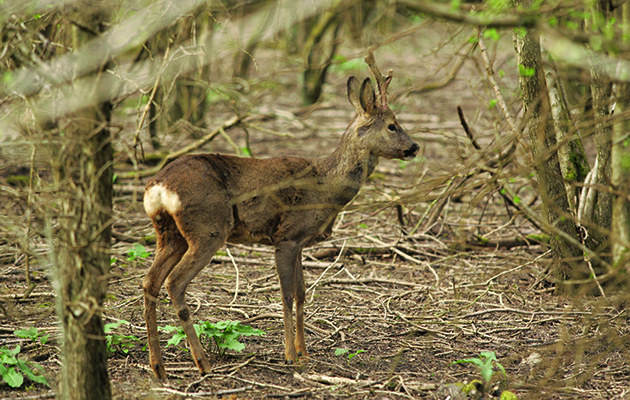
This immature buck has poor tine development
Juvenile bucks
When it comes to juvenile animals, there’s always a bit of a dilemma about what to leave and what to take. Naivety tends to be a major feature in the behaviour of juvenile animals; consequently they are easy to target. Conventional wisdom suggests that around 50 per cent of the annual buck cull should come from this class of animal but — rather like selecting a puppy from the nest — how do you choose? Bearing in mind that high juvenile mortality is a feature of roebuck life, it was suggested to me some years ago that a more realistic plan of action was to spare the juvenile bucks during their first year. The rationale was that, by the end of their second winter, nature would have weeded out the weak and the poor, allowing a more objective decision to be reached about those showing the potential to go forward and those best added to the cull total.
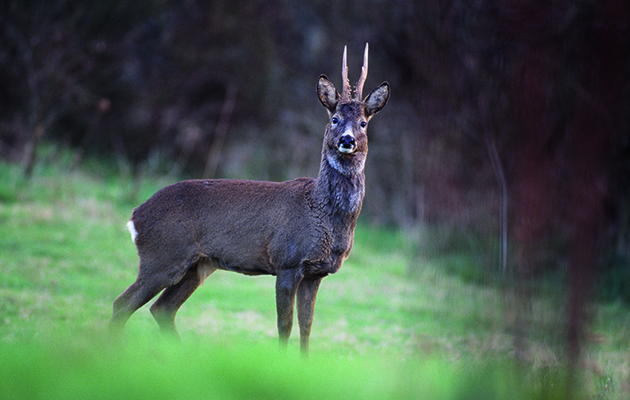
Mature animals carry the head low, have a thick neck and a rounded rump
Scoring potential
Trophy quality can be misleading when it comes to judging whether an animal has reached its peak. Having looked at and evaluated thousands of roebuck trophies, I still find it difficult to judge the scoring potential of a set of antlers on a live animal. There are too many variables. Will the weight be there? Is it porous? Have I got the length perspective correct? How long are the back tines? No doubt the eye and our adrenaline levels can deceive us as stalkers and, while both may result in decisions that confirm our assessment, others leave us shaking our heads in disbelief.
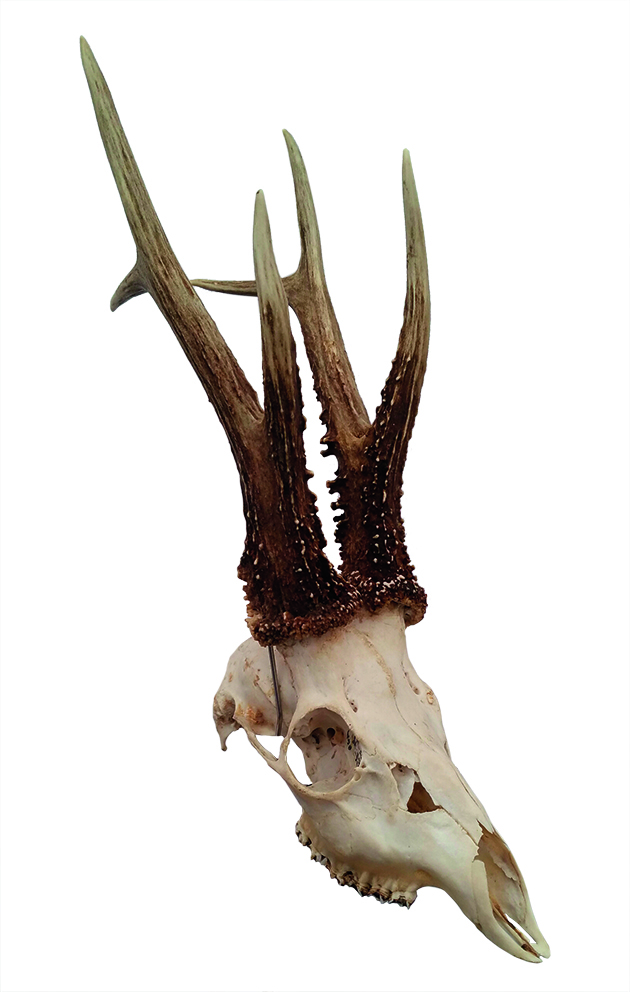
Leaving a buck to develop may produce the trophy of a lifetime – like this gold medal winner
Remember that trophy quality can vary from year to year. While the heads that animals grow should improve incrementally with age, and the “best” heads should appear on mature animals, there are factors that can temporarily stunt the development of a head or boost it in any particular growing year. As a rule of thumb and in an ideal world — and with no pressure from neighbours, main roads or demanding landlords — if a buck looks as though it’s not past late middle age, leave it to develop. It could be the trophy of a lifetime if the buck is given the chance.
Related Articles
Get the latest news delivered direct to your door
Subscribe to Shooting Times & Country
Discover the ultimate companion for field sports enthusiasts with Shooting Times & Country Magazine, the UK’s leading weekly publication that has been at the forefront of shooting culture since 1882. Subscribers gain access to expert tips, comprehensive gear reviews, seasonal advice and a vibrant community of like-minded shooters.
Save on shop price when you subscribe with weekly issues featuring in-depth articles on gundog training, exclusive member offers and access to the digital back issue library. A Shooting Times & Country subscription is more than a magazine, don’t just read about the countryside; immerse yourself in its most authoritative and engaging publication.







